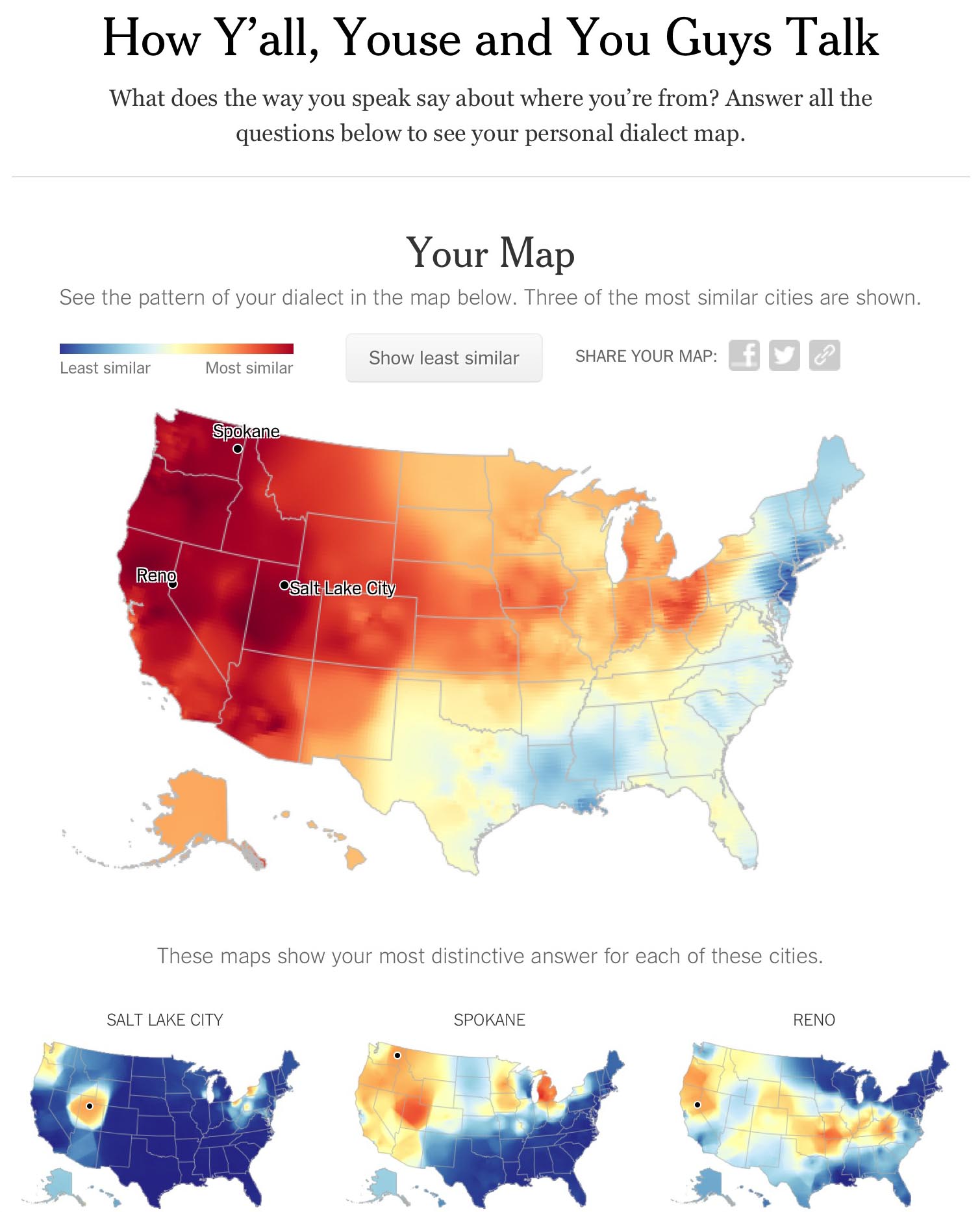Why Interactive Content Marketing Works
Interactive content marketing is no longer a novelty. It’s an essential lead generation strategy that helps businesses move beyond passive consumption and into active engagement. Instead of asking visitors to read, scroll, or skim, interactive content invites them to click, answer, calculate, or explore. This shift is what turns casual visitors into real prospects.
Static content still has its place, but it can’t match the performance of interactive formats when it comes to conversion. According to the Content Marketing Institute, 81% of marketers say interactive content grabs attention more effectively than static content. Even more compelling, a study by Demand Metric found that interactive content generates twice as many leads as passive content.

This matters more than ever because consumers are overloaded. They ignore generic ads and skim traditional blog posts. But when content demands their input—like answering a quiz, trying a calculator, or getting a personalized result—they stay longer, engage more, and share the experience with others.
For small businesses in particular, this presents a major opportunity. They don’t need massive budgets to compete. They just need to offer something useful, engaging, and memorable. Interactive content levels the playing field by creating direct pathways to deeper engagement and better lead qualification.
“Interactive content is not just a trend—it’s the future of digital marketing.”
— Joe Pulizzi, Founder of Content Marketing Institute
(Source: CMI Interview with Joe Pulizzi)
The psychology behind it is simple: when people participate, they invest. And when they invest, they’re more likely to convert. That’s why the smartest marketers aren’t just publishing content. They’re building experiences that start conversations and end in conversions.
How Small Businesses Can Leverage Interactive Content
Small businesses don’t need big budgets to make interactive content work. What they need is a clear strategy, the right tools, and a focus on delivering value. The goal isn’t complexity—it’s usefulness. Interactive experiences that solve a problem, answer a question, or create a moment of discovery are the ones that convert.

One standout example is Zenni Optical, an eyewear company that built a quiz called “Find Your Perfect Frames.” It guides users through a series of lifestyle and style questions, then recommends a frame. The result? The quiz generated more than 29% of the company’s revenue from email and social campaigns.
Another example comes from The New York Times. Its dialect quiz—intended to be a light, cultural engagement—became the most-viewed piece of content in the publication’s history. While not built for direct conversions, it showed the power of interactive tools to generate massive traffic and engagement.
For small businesses, this can be replicated at scale using tools like:
- Typeform and Outgrow for creating quizzes and calculators
- Interact for building branded lead-gen quizzes
- Canva for simple interactive infographics or social polls
A local fitness studio, Move with Grace, saw a 42% lift in email subscribers by offering a “What’s Your Ideal Workout Plan?” quiz to new site visitors. Each user received personalized fitness plans and a discount on their first class, tied directly to quiz results. The studio later integrated responses with their CRM to automate follow-ups and track leads.
Interactive content also enhances retargeting. By segmenting users based on how they interact with content, businesses can create sharper ad audiences, more personalized email campaigns, and stronger offers.
It’s not about producing flashy experiences. It’s about producing experiences that matter to the customer. When small businesses treat content like a conversation rather than a broadcast, the results speak for themselves.
Five Powerful Interactive Content Marketing Ideas That Drive Leads
Some content formats don’t just inform—they convert. For businesses focused on lead generation, these interactive content ideas consistently outperform traditional formats.Quizzes
Quizzes
Quizzes work because they feel personal. They promise insight in exchange for a few clicks. A strong example comes from Sephora, which launched the “Skincare Routine Builder” quiz. Shoppers answer questions about their skin type, concerns, and goals, and receive a tailored list of products. The quiz drives both email signups and product purchases, integrating directly with Sephora’s loyalty program and CRM. According to Glossy, these quizzes consistently generate higher engagement and higher cart values compared to traditional browsing.

Assessments
While quizzes are fun, assessments are functional. A B2B example is HubSpot’s Website Grader, which evaluates a visitor’s site and provides actionable feedback. It also captures contact info before delivering the results. This tool generated over 4 million leads for HubSpot.
Polls and Surveys
Interactive surveys help businesses collect voice-of-customer data while engaging users. SurveyMonkey provides templates tailored to customer feedback, satisfaction, and product validation. Small businesses use these to fine-tune messaging and improve products—while collecting email addresses in the process.
Calculators
ROI calculators are especially effective for service businesses. NerdWallet’s, for instance, offers a “Are you on track to save enough for retirement?” calculator. Visitors enter a few numbers and receive instant value insights. These tools not only convert visitors, they justify doing business.

Interactive Infographics and Videos
Visual storytelling becomes more compelling when users can explore and control the experience. The Guardian created an interactive piece on income inequality that let users compare their household income to national averages. Engagement time far surpassed that of static articles.
For small businesses, each of these formats can be built affordably with tools like Outgrow, SurveyPlanet, and Involve.me. What matters most isn’t polish—it’s clarity. Content that guides users toward action, while collecting the data that helps businesses close the loop.
When each interaction ends with a personalized result, a signup form, or a strong CTA, content becomes conversion.
Turning Engagement Into Conversions
Getting someone to click is only half the job. The real goal of interactive content marketing is to move visitors from interest to action. That transition depends on structure, clarity, and follow-up.
First, every interactive experience should be built around a lead capture moment. Whether it’s an email gate before quiz results, or a form embedded at the end of an assessment, users should clearly understand what they’re getting in return. When Neil Patel tested lead forms after content rather than before, conversions rose by 26%.
Next, integrations matter. Tools like Typeform, Interact, and Outgrow connect directly with platforms like Mailchimp and SaaSQL. When a user completes a quiz or assessment, their data is sent directly to your CRM or email automation system. That means every response triggers a relevant follow-up sequence.
Gymshark, for instance, used this strategy during product launches. A “Find Your Fit” quiz segmented users by goals and fitness level, then triggered automated flows with tailored product recommendations. The campaign doubled email open rates and lifted purchase conversion by 38%.
Personalized results work because they create a sense of ownership. People are more likely to act on advice they feel was made for them. That’s why even small businesses can outperform larger competitors by connecting interactive experiences to tailored messaging.
To maximize conversions:
- Include clear CTAs in every tool (“Get My Plan,” “See My Score,” “Start Now”)
- Limit friction—avoid long forms or slow load times
- Set up tracking to monitor drop-off points and completion rates
- Score leads based on responses to prioritize follow-up
Engagement without conversion is wasted effort. But when interactive tools are backed by strong capture mechanics and thoughtful automation, they become some of the most efficient lead generation strategies available.
The Tools Behind High-Converting Interactive Content
The best interactive experiences aren’t necessarily the most complex—they’re the most connected. For small businesses, choosing the right content engagement tools can mean the difference between passive clicks and active conversions.
Typeform, Outgrow, and Interact are among the most user-friendly platforms available. They allow businesses to launch quizzes, assessments, and calculators with drag-and-drop simplicity. More importantly, each integrates with major CRMs like HubSpot and marketing automation tools like Mailchimp, ensuring a seamless transition from interaction to follow-up.
AI Website Chatbots are also key players. According to Forrester, 42% of U.S. adults say website chat features are crucial when engaging with local businesses. Tools like SaaSQL’s AI-powered chatbot go beyond basic responses. They scan content, understand intent, and prompt users toward action—often doubling lead volume from existing traffic.
Another standout: SaaSQL’s Marketing Automation Platform, which allows brands to create interactive funnels that combine quizzes, forms, and conditional logic. A boutique skincare brand used the tool to match users with ideal products based on skin type and concerns. They captured more than 10,000 leads in 60 days, with 34% converting to first-time buyers.
“When interactive content is thoughtfully connected to your marketing stack, it doesn’t just engage users—it moves them down the funnel.”
— Aashish Chopra, Bestselling Author of Fast, Cheap and Viral
(Source: LinkedIn Article on Content Marketing Tools)
For visual storytelling, Canva now supports limited interactivity in presentations and infographics. This is particularly helpful for local businesses creating sharable assets for social media or email campaigns.
Here’s what small businesses should prioritize when evaluating tools:
- Native integrations with email, CRM, and analytics platforms
- Mobile optimization to capture on-the-go users
- Lead scoring features to separate casual browsers from high-intent buyers
- Templates that reduce development time and cost
The goal isn’t to overwhelm with options—it’s to choose tools that close the loop. When engagement data flows directly into systems that trigger action, businesses aren’t just collecting clicks. They’re building pipelines.
Why Interactive Content Isn’t Optional Anymore
The shift toward interactive content marketing reflects a broader change in how people consume and respond to information. Consumers are no longer satisfied with static experiences. They expect to engage, participate, and receive something personalized in return. That shift isn’t just happening—it’s already here.
Research from Ion Interactive found that 88% of marketers say interactive content differentiates them from competitors. For small businesses competing against bigger budgets, this kind of differentiation is essential. Static blogs and basic landing pages are no longer enough to hold attention—let alone generate qualified leads.
Today’s buyers want experiences that feel tailored and responsive. When someone takes a quiz, explores a calculator, or chats with an AI assistant, they aren’t just interacting with content—they’re engaging with a brand. That engagement builds trust, and trust drives conversions.
More importantly, interactive tools turn every touchpoint into data. Every answer, click, and behavior can inform targeting, messaging, and offers. Businesses don’t just see who’s interested—they see why, when, and how. That’s the foundation for smarter campaigns and lower acquisition costs.
Companies that wait to adapt will find themselves behind. Those that invest in building experiences—experiences that invite participation and reward action—will lead.
Because now more than ever, the businesses that get ahead are the ones that listen, learn, and let their customers interact.
Additional Resources
Content Marketing Institute
https://contentmarketinginstitute.com/articles/interactive-content-marketing
This article explains why interactive content marketing outperforms static formats, with insights from marketers who’ve used it to improve engagement and lead quality.
Demand Gen Report
https://www.demandgenreport.com/resources/reports/2017-content-preferences-survey-report
Based on survey data, this report shows that B2B buyers increasingly prefer interactive formats and are more likely to share their contact information in exchange for personalized results.
Forrester Research
https://go.forrester.com/blogs/why-chatbots-and-conversational-ai-are-transforming-customer-engagement/
Forrester outlines how AI-powered chat tools are becoming a central feature in digital engagement strategies, especially for local businesses aiming to capture and convert traffic.
HubSpot Blog
https://blog.hubspot.com/marketing/interactive-content
This comprehensive guide from HubSpot breaks down the benefits and best practices of using interactive content marketing tactics, iike quizzes, calculators, and assessments to generate leads and improve marketing ROI.







